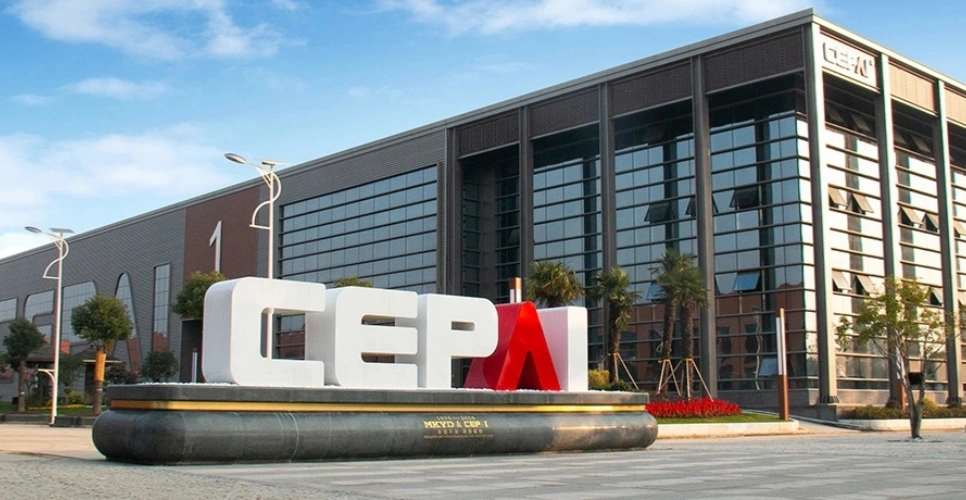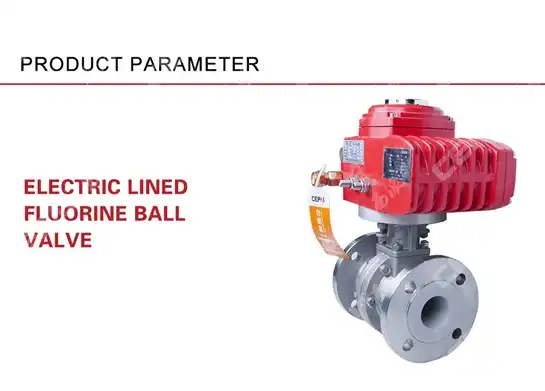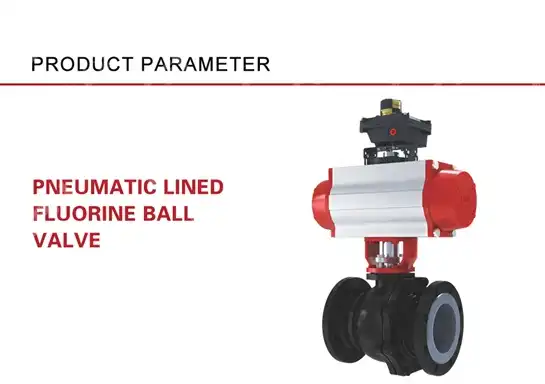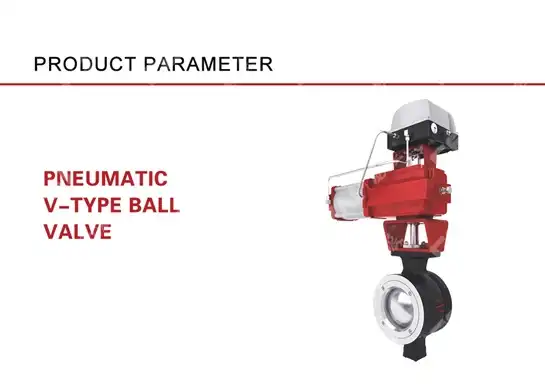Selecting an Electric Ball Valve for Industrial Automation
In today's rapidly evolving industrial landscape, equipment failures can cost companies thousands of dollars per hour in downtime. When critical process control systems fail, production lines shut down, quality suffers, and safety risks multiply exponentially. The selection of an appropriate Electric Ball Valve for your industrial automation system isn't just about meeting basic flow control requirements—it's about ensuring operational continuity, maintaining product quality, and safeguarding your investment in automated processes. This comprehensive guide provides the essential knowledge you need to make informed decisions when selecting Electric Ball Valve solutions that will deliver reliable performance, precise control, and long-term value for your specific industrial automation applications.

Understanding Electric Ball Valve Technology for Industrial Applications
Electric Ball Valve systems represent a sophisticated fusion of mechanical engineering and electronic control technology, designed to meet the demanding requirements of modern industrial automation. These advanced control devices utilize electric actuators to precisely manipulate the position of a ball within the valve body, enabling accurate flow regulation and reliable shut-off capabilities in critical process applications. The fundamental advantage of Electric Ball Valve technology lies in its ability to provide consistent, repeatable performance while integrating seamlessly with digital control systems and automation platforms. The core design of an Electric Ball Valve incorporates a spherical closure element with a through-hole that can be rotated to either allow or restrict fluid flow. When the valve is in the open position, the hole aligns with the pipeline, permitting maximum flow with minimal pressure drop. Conversely, when rotated 90 degrees to the closed position, the solid portion of the ball blocks the flow path completely. This quarter-turn operation, combined with electric actuation, provides rapid response times and precise positioning capabilities that are essential for automated process control applications.
-
Advanced Electric Actuator Integration
Modern Electric Ball Valve assemblies feature sophisticated actuator designs that deliver exceptional performance characteristics. The electric actuator responds rapidly to control signals, typically achieving full stroke operation in seconds rather than minutes. This fast response capability significantly improves overall system efficiency and enables real-time process adjustments. The integration of advanced control electronics within the actuator housing allows for precise positioning feedback, ensuring accurate valve positioning throughout the entire operating range. The reliability of Electric Ball Valve systems stems from the robust construction of both the actuator and valve components. Electric actuators incorporate advanced control technology with built-in protection features, including overload protection, position feedback, and diagnostic capabilities. These features contribute to stable, long-term operation even in demanding industrial environments where temperature fluctuations, vibration, and electrical interference are common challenges.
Key Selection Criteria for Industrial Electric Ball Valve Applications
Selecting the optimal Electric Ball Valve for your industrial automation requirements involves careful evaluation of multiple technical and operational factors. The decision-making process must consider not only the immediate application requirements but also long-term maintenance needs, system integration capabilities, and total cost of ownership considerations. Understanding these selection criteria ensures that your chosen Electric Ball Valve will deliver reliable performance throughout its operational lifecycle. The first critical consideration is the specific application environment and process requirements. Different industries and applications present unique challenges that directly impact Electric Ball Valve selection. For example, chemical processing applications may require corrosion-resistant materials and specialized sealing systems, while high-pressure oil and gas applications demand robust construction and enhanced safety features. The operating temperature range, pressure requirements, and fluid characteristics all influence the appropriate valve configuration and material selection.
-
Process Media Compatibility and Material Selection
The compatibility between the Electric Ball Valve materials and the process media is fundamental to ensuring safe, reliable operation. Corrosion resistance becomes particularly critical when dealing with aggressive chemicals, acidic solutions, or high-temperature applications. Advanced Electric Ball Valve designs incorporate specialized materials such as stainless steel alloys, exotic metals, and engineered polymer components to address specific corrosion challenges. The selection of appropriate valve body materials, including options like WCB, WC6, WC9, LCB, CF8, and CF8M, ensures optimal performance across diverse operating conditions. Sealing system selection represents another crucial aspect of Electric Ball Valve specification. The choice between metal seal and soft seal configurations depends on the specific application requirements. Metal seals provide superior high-temperature performance and extended service life in harsh environments, while soft seal options offer enhanced sealing performance for lower-pressure applications. Modern Electric Ball Valve designs often incorporate PTFE and flexible graphite sealing materials to optimize performance across a wide range of operating conditions.
-
Electrical and Control System Integration
The electrical characteristics of Electric Ball Valve systems must align precisely with existing automation infrastructure and control system requirements. Voltage compatibility is essential, with standard options including 220V and 380V configurations to accommodate different regional and industrial standards. The control signal interface, typically featuring 4-20mADC compatibility, ensures seamless integration with distributed control systems and programmable logic controllers commonly used in industrial automation applications. Advanced Electric Ball Valve systems provide comprehensive feedback capabilities, including valve position indication and diagnostic information. These features enable predictive maintenance strategies and enhance overall system reliability. The integration of intelligent positioners, limit switches, and valve position transmitters further extends the capabilities of Electric Ball Valve systems, providing operators with real-time status information and enabling sophisticated control strategies.
Performance Specifications and Technical Requirements
The performance characteristics of Electric Ball Valve systems directly impact the effectiveness of industrial automation applications. Understanding these specifications enables informed decision-making and ensures optimal system performance. Key performance parameters include flow characteristics, pressure ratings, temperature ranges, and leakage classifications that must align with specific application requirements. Flow characteristics represent a fundamental consideration in Electric Ball Valve selection. The equal percentage flow characteristic provides predictable flow control across the entire valve stroke, enabling precise process control and system optimization. This characteristic becomes particularly important in applications requiring accurate flow modulation and process variable control. The V-shaped ball design enhances flow control capabilities, providing superior throttling performance compared to conventional ball valve configurations.
-
Pressure and Temperature Specifications
Electric Ball Valve systems must be specified to handle the maximum pressure and temperature conditions encountered in the specific application. Pressure ratings including PN16, PN40, PN64, and ANSI Class 150, 300, and 600 provide options for diverse pressure requirements. The selection of appropriate pressure ratings ensures safe operation with adequate safety margins while avoiding over-specification that increases system costs unnecessarily. Temperature considerations encompass both the process media temperature and the ambient operating environment. Electric Ball Valve actuators typically operate effectively within temperature ranges of -30°C to +70°C, while the valve body materials must withstand process temperatures that may significantly exceed ambient conditions. Proper temperature specification ensures reliable operation and prevents premature failure due to thermal stress or material degradation.
-
Leakage Performance and Safety Standards
Leakage performance represents a critical safety and environmental consideration in Electric Ball Valve applications. Modern designs achieve leakage rates that meet or exceed ANSI B16.104 Level IV standards for metal seal configurations and Level VI standards for non-metallic valve seats. These stringent leakage requirements ensure environmental protection and process safety while minimizing product loss and contamination risks. The implementation of comprehensive safety systems, including fail-safe operation modes and emergency shutdown capabilities, enhances the overall safety profile of Electric Ball Valve installations. These features become particularly important in critical process applications where valve failure could result in environmental releases or safety hazards.

Installation and Configuration Best Practices
Proper installation and configuration of Electric Ball Valve systems are essential for achieving optimal performance and reliability. The installation process involves mechanical mounting, electrical connections, and system commissioning procedures that must be executed according to manufacturer specifications and industry best practices. Understanding these requirements ensures successful system implementation and long-term operational success. The mechanical installation of Electric Ball Valve systems requires careful attention to piping alignment, support structures, and accessibility for maintenance operations. Flange-type and clamp-type connection options provide flexibility for different installation requirements and piping configurations. Proper alignment prevents stress concentration on valve components and ensures smooth operation throughout the valve lifecycle.
-
Electrical Installation and Safety Considerations
Electrical installation procedures must comply with applicable electrical codes and safety standards while ensuring reliable signal transmission and power delivery. The routing of control cables, power connections, and feedback signals requires careful planning to minimize electromagnetic interference and ensure signal integrity. Proper grounding and electrical protection systems protect both personnel and equipment from electrical hazards. The configuration of Electric Ball Valve control systems involves setting parameters such as stroke time, fail-safe position, and control signal ranges. These settings must align with process requirements and safety considerations to ensure optimal system performance. Comprehensive testing and commissioning procedures validate proper operation before placing the system into service.
Maintenance and Lifecycle Management
Effective maintenance strategies maximize the operational life and reliability of Electric Ball Valve systems while minimizing total cost of ownership. Preventive maintenance programs address both mechanical and electrical components, ensuring continued reliable operation throughout the equipment lifecycle. Understanding maintenance requirements enables proper resource planning and supports predictive maintenance strategies. Regular inspection and testing procedures monitor key performance indicators and identify potential issues before they result in system failures. The diagnostic capabilities integrated into modern Electric Ball Valve actuators provide valuable information about system health and performance trends. This data supports condition-based maintenance strategies that optimize maintenance timing and resource utilization.
-
Predictive Maintenance and System Optimization
Advanced Electric Ball Valve systems support predictive maintenance approaches through integrated monitoring and diagnostic capabilities. Position feedback systems, torque monitoring, and electrical parameter analysis provide insights into valve condition and performance degradation. This information enables proactive maintenance interventions that prevent unexpected failures and extend equipment life. The availability of replacement parts and technical support services represents an important consideration in Electric Ball Valve selection. Established manufacturers with comprehensive service networks ensure continued support throughout the equipment lifecycle. Access to technical expertise, spare parts, and upgrade options protects the long-term investment in Electric Ball Valve systems.
Conclusion
Selecting the right Electric Ball Valve for industrial automation applications requires careful consideration of technical specifications, application requirements, and long-term operational needs. The integration of advanced electric actuator technology with precision-engineered valve components creates systems that deliver reliable performance, precise control, and extended service life. Success depends on understanding the complex interplay between process requirements, environmental conditions, and system integration capabilities that define optimal Electric Ball Valve selection for each unique application.
Cooperate with CEPAI Group Co., LTD.
CEPAI Group Co., LTD. stands as a premier China Electric Ball Valve manufacturer, established in January 2009 with a registered capital of 200 million yuan and a total plant area of 56,000 square meters. As a national high-tech enterprise and specialized "little giant" company, CEPAI has earned recognition as a Jiangsu Smart Factory and Internet benchmarking facility, winning the Mayor Quality Award in 2022.
Our company specializes in high-end energy valve manufacturing, offering comprehensive solutions including Electric Ball Valve systems alongside pneumatic control valves, electric control valves, pneumatic ball valves, pneumatic butterfly valves, electric butterfly valves, and fluorine lined valves. As a leading China Electric Ball Valve supplier, we have obtained supplier qualifications from PetroChina, Sinopec, and CNOOC, serving major clients including China Datang Group, Baowu Group, China Huaneng, Wanhua Chemical, and China Power Construction.
Our state-of-the-art manufacturing facility features the longest high-precision intelligent manufacturing flexible production line in the Asia Pacific region, representing a 156 million yuan investment in intelligent transformation. This advanced infrastructure positions us as a top China Electric Ball Valve wholesale provider, delivering High Quality Electric Ball Valve solutions with competitive Electric Ball Valve price points. Our comprehensive certifications including API Q1, API 6A, API 6D, ISO 9001, CE, and multiple SIL certifications ensure world-class quality standards.
Whether you need standard Electric Ball Valve for sale or customized solutions, our experienced engineering team provides pre-sales technical consultation, customized design services, and comprehensive after-sales support. Contact us at cepai@cepai.com to discuss your Electric Ball Valve requirements and discover why industry leaders choose CEPAI as their trusted China Electric Ball Valve factory partner.
FAQ
Q: What are the main advantages of electric actuators over pneumatic actuators for ball valve applications?
A: Electric actuators provide precise positioning control, eliminate the need for compressed air systems, offer better integration with digital control systems, and typically provide slower opening/closing speeds that prevent water hammer in high-pressure applications.
Q: How do I determine the correct pressure rating for my Electric Ball Valve application?
A: Select a pressure rating that exceeds your maximum system pressure by at least 25%. Consider both static pressure and potential pressure spikes. Common ratings include PN16-64 and ANSI Class 150-600, depending on your system requirements.
Q: What maintenance is required for Electric Ball Valve systems?
A: Regular maintenance includes periodic electrical connection inspection, actuator lubrication, valve exercise testing, and monitoring of control signal integrity. Most electric actuators require minimal maintenance compared to pneumatic systems.
Q: Can Electric Ball Valves be used in hazardous environments?
A: Yes, when properly specified with appropriate electrical enclosures and certifications such as ATEX or IECEx ratings. The actuator housing must meet environmental protection requirements for the specific installation location.
References
1. "Industrial Valve Technology: Principles and Applications" by Smith, J.A., Thompson, R.L., and Chen, M. (2023)
2. "Automated Process Control Systems in Manufacturing Industries" by Rodriguez, C.E., Anderson, K.M., and Williams, P.D. (2022)
3. "Flow Control Engineering: Design and Selection of Industrial Valves" by Johnson, R.B., Lee, S.H., and Murphy, T.J. (2024)
4. "Electric Actuator Systems for Industrial Automation" by Brown, A.L., Davis, N.C., and Peterson, M.R. (2023)
_1746598568348.webp)
Get professional pre-sales technical consultation and valve selection services, customized solution services.

About CEPAI


